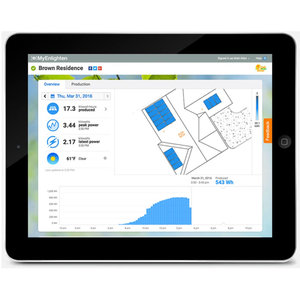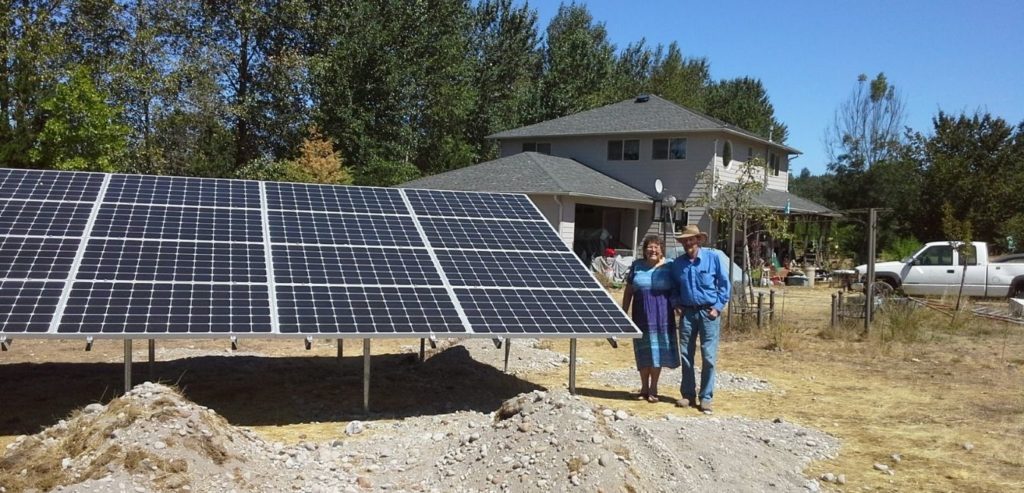Converting Sunlight to Usable Energy
Solar power is created by turning sunlight (i.e., photons) into usable energy. First, the sunlight is collecting by the solar array which converts the light into direct current (DC) energy through the photovoltaic effect. Because DC energy is not compatible with the utility grid, it is converted to alternating current (AC) energy via solar inverters.
The AC energy passes through a production meter (or 24/7 monitoring equipment) calculating the total number of solar kilowatt-hours you generate. Any excess solar power is pushed onto the grid and is measured by the net energy meter crediting you for any excess.
Scroll below to see how each component of the solar electric system works.
Solar Panel Array
A solar panel array is a collection of solar panels wired together. The solar panels are comprised of solar cells. When a photon from the sun interacts with the cell, an electron is knocked loose. Electrons begin to flow from one side of the cell to the other. This flow of electrons is electricity.
The electrons travel along conductors that connect the solar cells together, making a solar panel. Individual panels (or modules) are connected together in either series or parallel connections. This is called a “string.” All combined, this is considered a solar array.
At this point, direct current or DC energy is being produced.
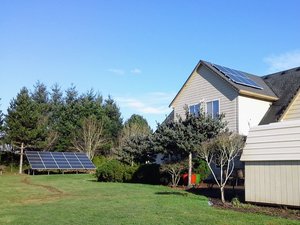
Solar Inverter
From the solar array, the wires travel down conduit and land connections at the solar inverter. Sometimes these inverters are located on the roof underneath your panel. The inverter is what converts DC energy that is produced from your solar array into usable, alternating current (AC Energy).
There are two types of solar inverters; 1) Microinverters, and 2) String Inverters. String inverters convert the energy from strings of solar panels. Microinverters are smaller and attach to each solar panel in the PV array.
In many cases, we recommend microinverters over string inverters because they provide panel-level solar monitoring and have 25-year warranties; string inverters are warrantied for 10 years.
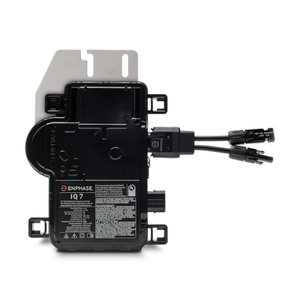
Racking/Mounting System
The mounting system -sometimes called racking system – is the ‘glue’ that holds your solar array and microinverters in place.
Depending on your choice of aesthetics, you may choose between a variety of black/white combinations.

Net Energy Metering (NEM)
Net Energy Metering, or NEM, is a billing system that credits you for any excess solar electricity you create at the full retail electric rate.
When you are producing more solar energy than your home needs your utility allows your meter to run backward generating credits and reducing your electric bill. Credits tend to build up quickly in Oregon and Washington’s sunny summer months and “cashed-in” during the less-sunny months.
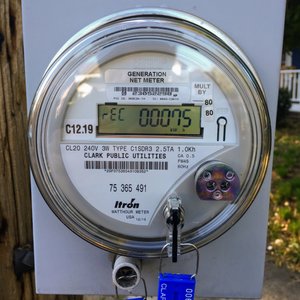
Production Meter
From the solar inverter, AC energy passes onto a production meter. The production meter calculates your gross AC solar energy production. Most Oregon utilities do not require this meter. In Washington, this meter is necessary to have in order to receive certain state cash incentives.
The number of this meter only increases because it is the gross number of solar kilowatts generated from your system.
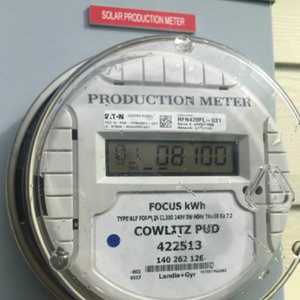
Monitoring Applications
Every Sunbridge Solar customer will receive the ability to track their solar production online. You will be able to view your solar array at the solar panel level. View by the minute to lifetime. Protect your investment!
